#isotelus
Text
Welcome back to the Paleo Party! This guest is Isotelus! They have gotten a size update since I did their original design,,,,,, but maybe I want them to be a little bigger. I have to do justice to my homestate fossil!!
8 notes
·
View notes
Text
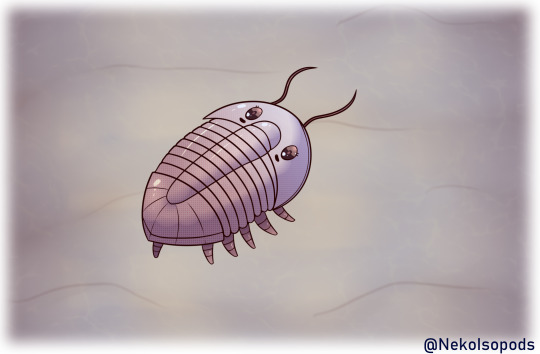
Isotelus (Feb. 2022)
16 notes
·
View notes
Text
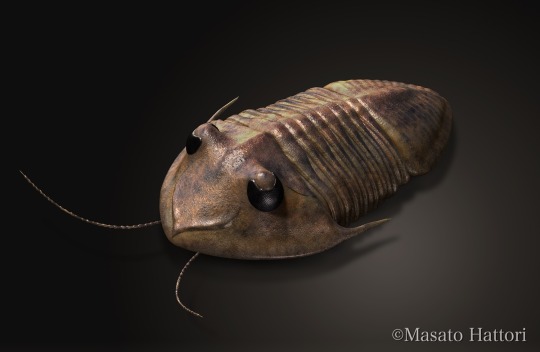
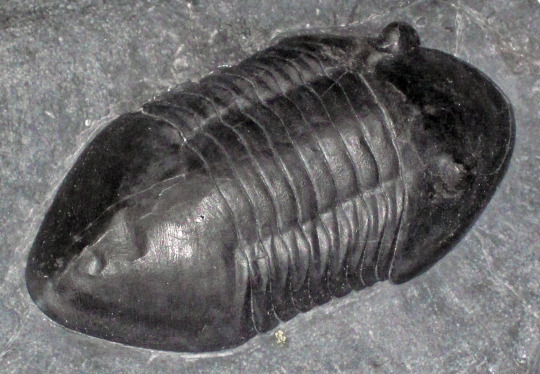



Isotelus
(temporal range: 470-444 mio. years ago)
[text from the Wikipedia article, see also link above]
Isotelus is a genus of asaphid trilobites from the middle and upper Ordovician period, fairly common in the Northeastern United States, northwest Manitoba, southwestern Quebec and southeastern Ontario. One species, Isotelus rex, is currently the world's largest trilobite ever found as a complete fossil, and was probably exceeded in size only by Hungioides bohemicus, in which the specimens probably exceeding Isotelus rex in size are only known from partial remains.
7 notes
·
View notes
Photo

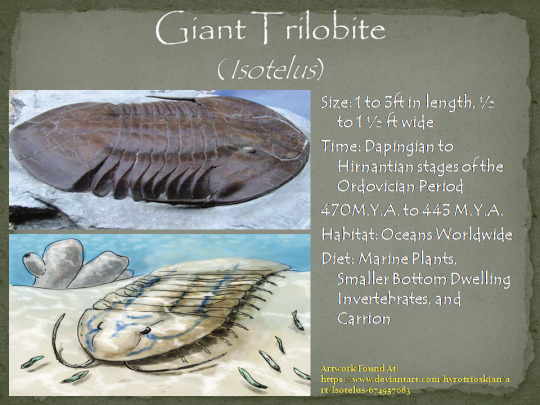
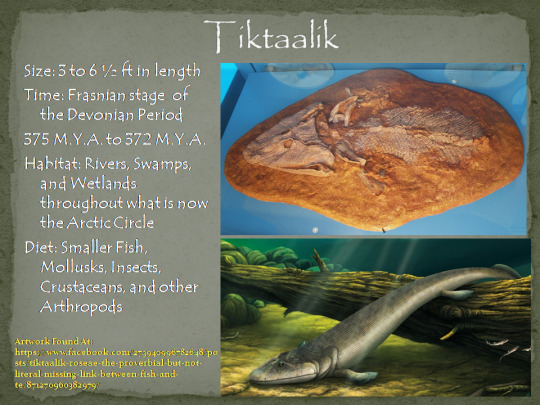


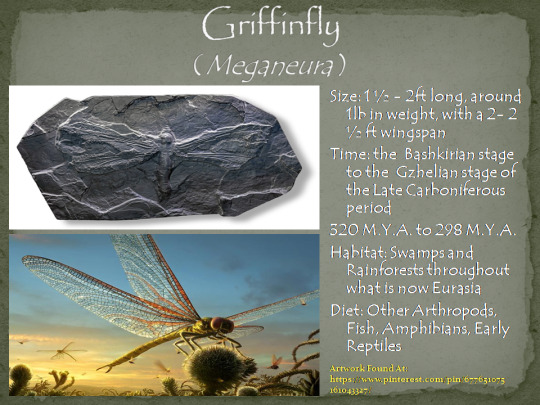

First Batch of Paleozoic Organisms of my fossil collection
#paleozoic#extinct#tiktaalik#dunkleosteus#trilobite#isotelus#giant#scorpion#dragonfly#griffinfly#meganeura#millapead#pulmonoscorpius#millipede#arthropleura
52 notes
·
View notes
Text
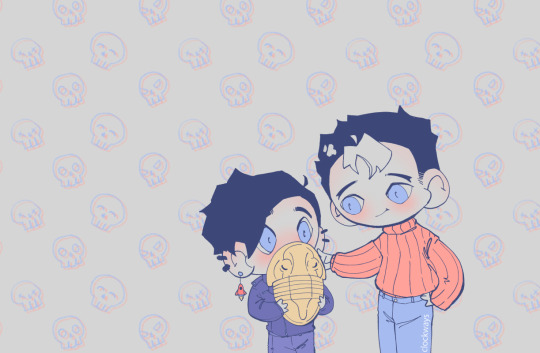
It’s just a little fellow. Just a little friend. Just a little Isotelus maximus!
1K notes
·
View notes
Text

It should have been easy; he had a plan. He had run through the plan and practiced it and perfected it. It had steps. He just… needed to put the plan into place. That’s the part that was easier said than done.
There was so much that could go wrong. What if Danny was offended? What if they tried and everything went up in flames? What if he lost this friendship? What if it went well?
(btw, if you want your own trilobite plushie, this is where I got mine from~ https://pri-gift-shop.myshopify.com/collections/plush/products/paleozoic-pals-trilobite-plush-isotelus)
120 notes
·
View notes
Text


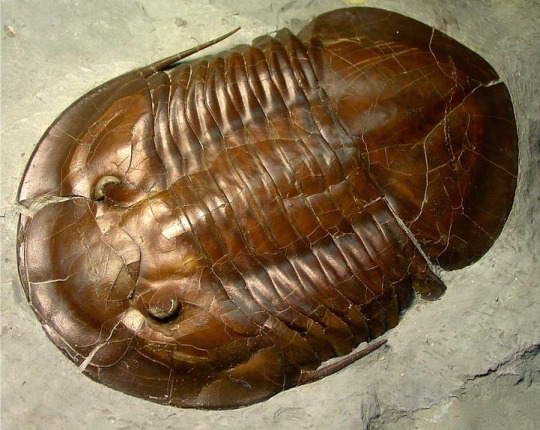
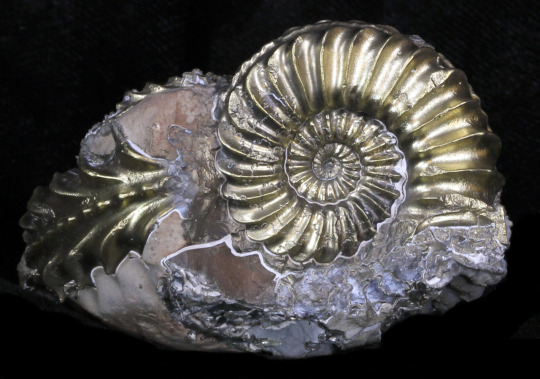
Pachycephalosaurus skull - Montana - Late Cretaceous
birthing Chaohusaurus ichthyosaur - China - Triassic
Isotelus maximus trilobite - Ohio - Upper Ordovician
pyritized Pleuroceras ammonite - Forcheim, Germany - Jurassic
67 notes
·
View notes
Text

The second piece in my new #paleoart series “Paleozoa” featuring #cameroceras , #isotelus , and #sacabambaspis in an #ordovician ocean #digitalart #procreate #ipadpro
2 notes
·
View notes
Text
You've seen its counterpart, now get ready for:

Trilonyte - The Drowsy Pokémon! (#70)
Type: Rock/Bug
Ability: Groggy
Height: 1' 8" / 0.5 m
Weight: 15.4 lbs / 7.0 kg
Trilonyte is a Fossil Pokémon, obtained by first retrieving and then reviving the Molt Fossil at the Clefton Museum of Natural History (but be careful - Trilonyte is exclusive to Pokémon Steel)! With what is known today about its behaviors, many scientists consider it to be a minor miracle that any Pokémon of this species survived to adulthood. Trilonyte sleeps a whopping 20 hours a day, and spends the rest of its time wishing it could be asleep. It is often seen using the protrusion on its tail as a pillow and dozing by the riverbank and relaxing under its soft, plush shell. It relies mostly on Bivoutel to protect it, though they hardly fair much better, and are usually asleep right beside them.
Both Trilonyte and its evolution have the Signature Ability Groggy. Every turn, a Pokémon with Groggy has a 1/12 chance of gaining the Sleep status. Groggy cannot trigger while the Pokémon is already asleep, but can while it has a different status effect.
If it manages to survive long enough, it become Bivoutel. The corresponding fossil Pokémon exclusive to Pokémon Flint is Ikivac, which you can read about here.
For a behind-the-scenes look at this Pokémon, read below!
I think that this Pokémon is by and far the one I have struggled the most with designing so far. I knew I had to do an isotelus Pokémon (for the state fossil of Ohio), but much like how I was reticent to make a dunkleoestus Pokémon because of Relicanth and Dracovish/Arctovish, I was also feeling wary because it felt like Kabuto and Wimpod had the market cornered with trilobite-esque Pokémon. But, after a lot of work, I'm fairly happy with the result.
The spark of inspiration was twofold. The first part was this weird thought I had where I realized that the overlapping layers of a trilobite's shell kind of look like a sleeping bag. I actually designed Bivoutel first because of this idea, though it ended up not looking like a base stage Fossil Pokémon. The second was that there are two already-existing Pokémon with really good stats that have horrible Abilities: Archeops, a Fossil Pokémon, and Golisopod. I figured that if I'm going to make a guy that looks similar to Wimpod anyway, I might as well go whole hog. You can only get so wet, right? So, with Archen's ability lowering your stats and Wimpod's swapping you out involuntarily, I completed the trio of undesirable Pokémon effects by just having him fall asleep. And like those two, don't worry, its evolution is going to have, like... a 580 BST.
There's not too much to say about their design, other than I struggled with it for a weird amount of time. It's hard to tell, but they're supposed to have a striped pattern on their shell, like a security blanket. Maybe I should have gone for a baby blue color, like Linus's blanket? Oh well. Either way, just for fun, here's the drafting process for this little guy. You can see in the bottom of the first picture, I toyed with the idea of giving them a long, dress-like shell to more accurately reflect a blanket, and even a horn that looks like a nightcap at one point. In the second, you can see my first go at his pillow tail, which went less well than I would have wanted.
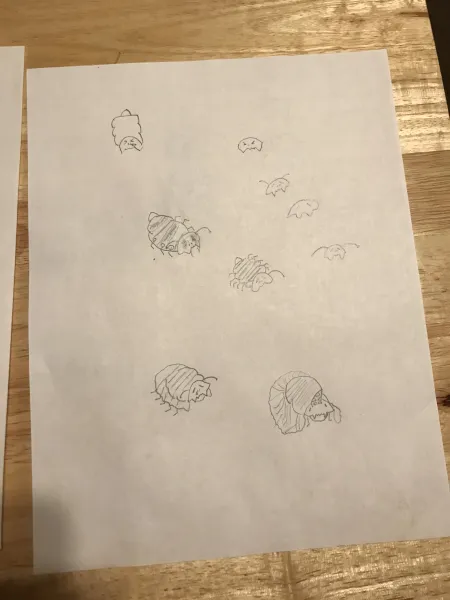
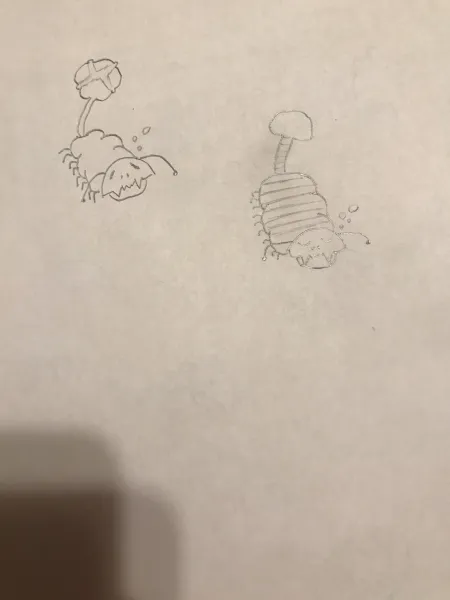
2 notes
·
View notes
Text
I can go to the museum and see the biggest trilobite ever found . It's called Isotelus Rex and its like a brother to me
9 notes
·
View notes
Text
Ohio state facts
came form the ohio river
the great river 981 miles, 24ft deep
7 presidents were born there
1908 1st professional fire department
1865 1st ambulance service
largest comic books billy ireland cartoon library and museum
cedar point
cincinnati zoo 2nd oldest
cleveland metro parks system largest urban parks 23,000
buckeye state- buckeye tree
rock and roll fame
avon ohio duck tape capital of the world
state capital columbus
state size 44,825 sq miles
population 11.1756.058
state hood 3-1-1803
highest point campbell hill 1549ft
lowest point 455ft ohio river at indiana burder
length 220 miles width 220 miles
national parks cuyahoga valley national park
state motto with good all things are possible
state nick name buckeye state
nobel prize 8
famoius people 5
state song hang on sloppy
state fossil isotelus
state flower scarlet carnation
state wildflower white triltium
state bird cardinal
state reptile black racer snake
state gemstone ohio flint
state tree buckeye tree
state fruit tomato
state native fruit paw paw
state groundhog buckeye chuck
state aritfact the sdena pipe
0 notes
Text
#167
Isolus
Neutral
Mid-range
Small
Hp: Very Low
Atk: Above Average
Def: Low
Acc: Above Average
Spd: High
Support: Enemy -Atk 10%, -Def 40%, -Acc 40%, -Spd 10%
With Counter plus, debilitating support effects, a move that heals its whole team, and the slight chance to enrage its foe, enemies should be on guard when facing this Vivosaur!
-
Isotelus
2 feet
Paleozoic Ordovician
Diet: Carnivore
Location: USA, Canada
The largest trilobite found to date, though that isn't saying much.
-
Since all the trilobites have been based on swords, I kept the theme for Isolus, which is based on rapiers and fencing. It has rapier blades jutting out of its head at a similar angle as Radox's blades, though leaned more upward. Its coloration is reminiscent of modern fencing wear, with its head having a dark gray mesh pattern except for its eyes - the left is red, and the right is green, referencing scoring machines used in fencing. The main body is white with colored spots along the sides - again, red on the left, green on the right.
Isolus is found in Curious Fossil Rocks. It has no super evolver.
#fossil fighters#fossil fighters revival#vivosaurs#original vivosaurs#fanmade vivosaurs#isotelus#trilobite#neutral vivosaurs#curious fossil rocks
3 notes
·
View notes
Photo
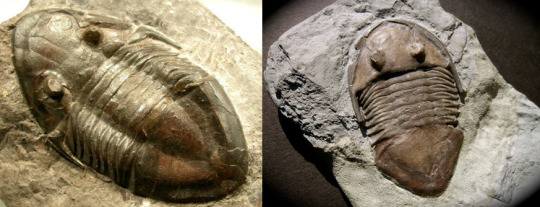
image credit: The Virtual Fossil Museum (Gallery) and Fossilmall
eyy what’s up ya’ll I'm back to rate the fossil Isotelus, a genus of trilobites that lived during the late Ordovician period but died out w the rest of its homies in the Permian-Triassic extinction :((. Something unique about this beb is that they can grow to be pretty mASSive when compared to other genuses of trilobites. Take this: in 1999, a specimen of the lovely Isotelus rex was found in the Manitoba province of Canada. It clocked in at 720 mm/28in in length (bruh that's !! more than 2 ft long !!), and 400mm/16in in max width, across the cephalon (cephalon = basically the head). This means that it holds the record for the largest complete trilobite ever found! Just a note: neither of the photos above is I. rex; the left is actually I. gigas, and the one on the right is I. maximus.
Fun Fact: Isotelus is actually the official state fossil of Ohio!!
now all i need is to rate another trilobite (mayb cryptolithus or eldredgeops?? do yall have any suggestions) and the Big Trilobite Triadᵀᴹ will finally be complete
small-custard assessment: I give Isotelus a noice 8.9/10.
#fossils#isotelus#paleontology#palaeontology#isotelusrex#dinosaurs#notactuallyadinolol#ordovician#canada#ohio#earth#earthscience#geology#small-custard assessment
61 notes
·
View notes
Text

Isotelus illustration
You can buy merch of it here! https://www.redbubble.com/shop/ap/56652847
#paleontology#paleoart#palaeontology#palaeoart#palaeoblr#my art#trilobite#illustration#isotelus#digital art#digital drawing
4 notes
·
View notes
Text
Meet the Fossil Detectives in the Basement
by Suzanne Mills and Albert Kollar
Gray metal storage cabinets march in rows across the concrete floor. The collection space has no windows and there is a constant hissing sound from the overhead air ducts. No matter, the staff is looking for clues of the geologic and paleontological past, or History of the Earth, through the vast collection of fossil invertebrates. The staff and volunteers of the Section of Invertebrate Paleontology (IP) is tasked to reorganize, preserve, and curate fossils through the leadership of the Collection Manager Albert Kollar.
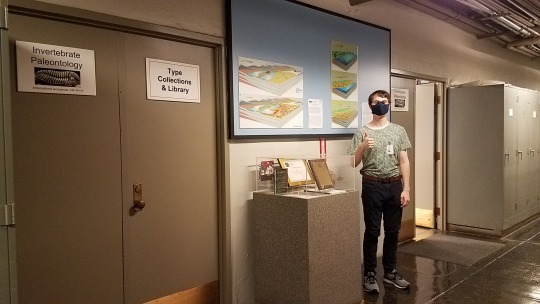
Collection Assistant Kevin Love at the doors of the Invertebrate Paleontology section.
On any given workday, you’ll find us hefting drawers full of fossil-bearing rocks and playing specimen-box Tetris to make fossils fit in the available cabinet space. We examine century-old inventory books, search out (usually Google) maps to find absconded valuables (historical fossil sites), and decipher written scripts in unfamiliar French and German for valuable geologic data.
Long-term volunteers in IP include Rich Fedosick, a researcher assisting in the project to document the Carnegie building stones; John Harper, an expert on fossil snails taxonomy, Roman Kyshakevych, who is deciphering the famous Coppi collection from Italy; Tamra Schiappa, a paleontologist at Slippery Rock University who is updating fossil cephalopod identifications; and Vicky Sowinski, who performs collection support. Student researchers include collection assistant and graphic artist Kay Hughes, a 2021 Mount Holyoke College graduate who coauthored four peer-reviewed scientific publications produced by IP; and collection assistant Will Vincentt, who researched two Bayet collections, the Hunsruck Slate of Germany and Lyme Regis of England. Tara Pallas-Sheetz, a part-time assistant, has worked on various projects over the years.
Hear from some of our newest staff and summer volunteers in their own words below.

Lizzie Begley with large fossil corals
Name: Lizzie Begley
About me: B.A. Anthropology Penn State 2021; masters candidate in Museum Studies and Non-profit Management certification in progress at Johns Hopkins University
Why IP: Working “behind the scenes” in IP has helped me develop a better sense of what it looks like to work in a museum such as the Carnegie. As an aspiring museum professional, experience behind gallery floors is invaluable as I work to find my place in the field. For this experience I couldn’t be more grateful and, honestly, couldn’t be having more fun!
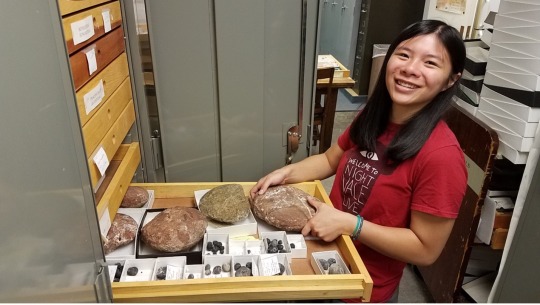
Katie Golden with fossil ammonites
Name: Katie Golden
About me: B.S. Biology, Juniata College 2023 (expected)
Why IP: When I was in preschool, I told people I wanted to be a paleontologist when I grew up. Here in IP, I like exploring a part of the museum that most people don’t get to see. I particularly enjoy puzzle-piecing together fossils that need repair. The intricate ammonites, trilobites, and insects preserved in amber are especially beautiful. My favorite fossil organism is Anomalocaris.

Tori Gouza with fossil corals
Name: Tori Gouza
About me: B.A. History and Anthropology, University of Pittsburgh 2023 (expected)
Why IP: I love working in IP. It is so exciting to be able to interact with others in the section and to learn what projects they are currently working on. Albert Kollar has encouraged not only discussion but also collaboration. It is great to converse with others who are passionate about their work.

Kevin Love enters data about a fossil eurypterid
Name: Kevin Love
About me: IP Collection Assistant; B.S. Geology and Ecology & Evolution summa cum laude, University of Pittsburgh 2021
Why IP: I like solving puzzles at work. I find invertebrate fossils aesthetically appealing, but the main reason I like this job is that I get to understand little enigmas from Earth’s past. I like solving historical questions and compiling more information about fossils in the collection.
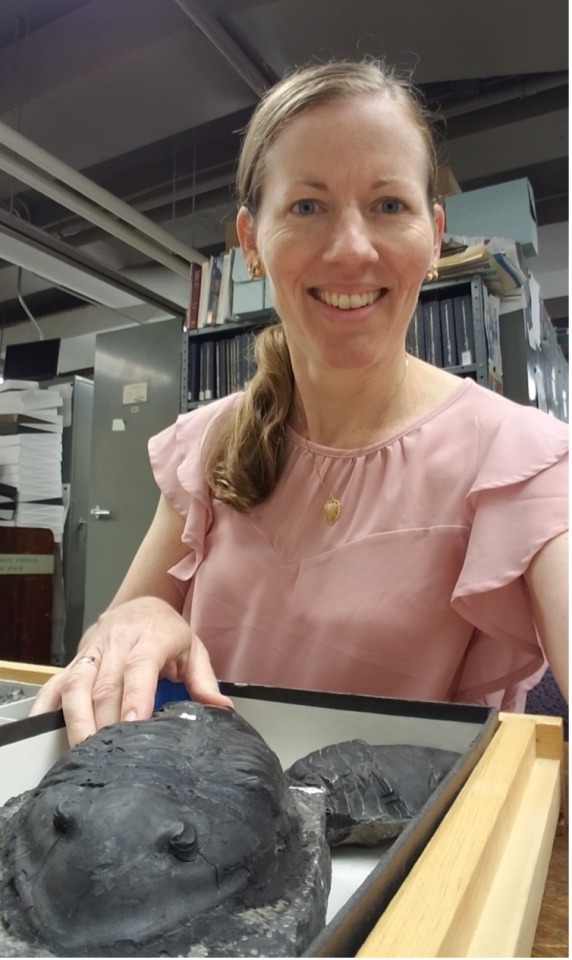
Suzanne Mills with fossil trilobite Isotelus gigas
Name: Suzanne Mills
About me: IP Collection Assistant, Professional Geologist, mom
Why IP: Every day is different when you work with a collection of 800,000 specimens. I may come across a 100-million-year-old ammonite sparkling with crystals inside, or a drawer full of trilobites acquired by the museum in 1903, when Andrew Carnegie was alive. I love that my work requires me to learn more about fossils which are beautiful, historical, and scientifically significant.
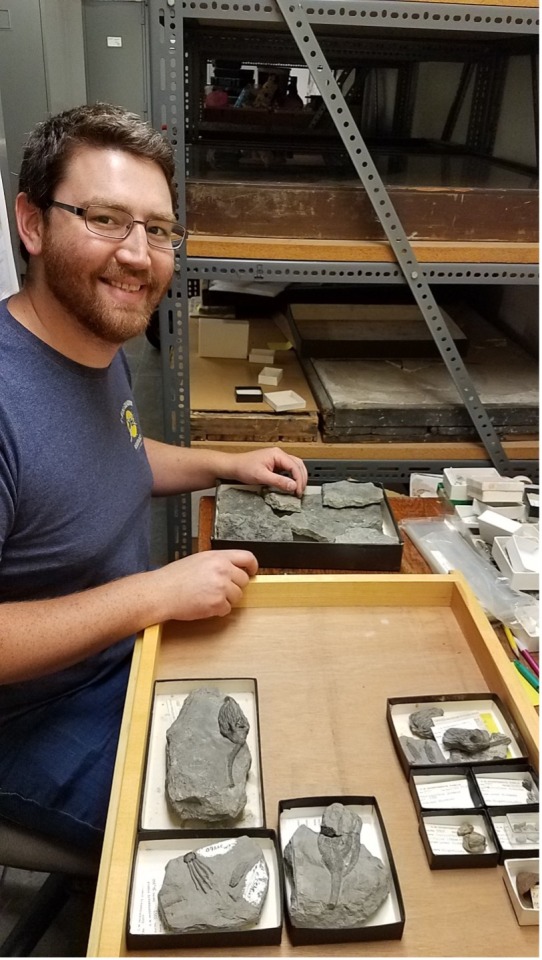
Ellis Peet with fossil crinoids
Name: Ellis Peet
About me: B.S. Environmental Geoscience with Geology concentration, Slippery Rock University 2021
Why IP: The management and staff of IP are smart, kind, personable, and they take paleontology seriously. I also like the environment at IP because it smells like a library and limestone dust, which reminds me of the geology department at Slippery Rock.
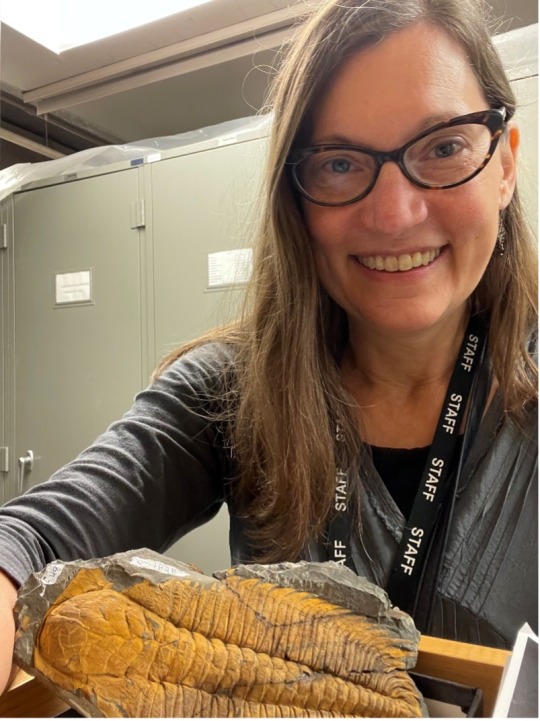
Joann Wilson with fossil trilobite Paradoxides spinosus from the Baron de Bayet collection
Name: Joann Wilson
About me: Interpreter for the Department of Education, Carnegie Museum of Natural History
Why IP: Fossils inspire awe. I enjoy unravelling the stories behind the individuals that discovered, studied and collected these breathtaking specimens.
Suzanne Mills is a Collection Assistant and Albert Kollar is Collections Manager in the Section of Invertebrate Paleontology at Carnegie Museum of Natural History. Museum employees are encouraged to blog about their unique experiences and knowledge gained from working at the museum.
#Carnegie Museum of Natural History#Natural History#Paleontology#Invertebrate paleontology#Fossils#Museum Work
70 notes
·
View notes
Photo
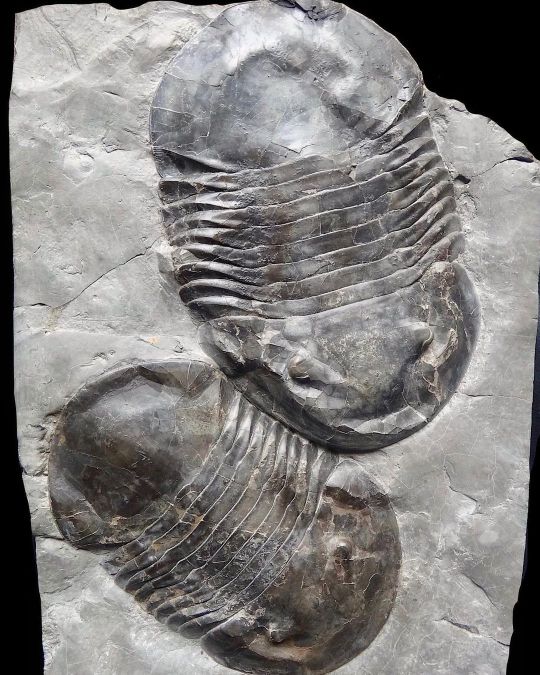
Welcome to Trilobite Tuesday! Isotelus latus is one of the giants of the group. Found in the Ordovician-age outcrops throughout Eastern Canada, this super-sized species could grow up to 12 inches (30.5 centimeters) long. For comparison, the majority of the some 25,000 scientifically recognized species only grew around 3 inches (7.6 centimeters) or less in length. (at American Museum of Natural History) https://www.instagram.com/p/CKg2IiFgsvt/?igshid=1dmy1sfr3533p
267 notes
·
View notes